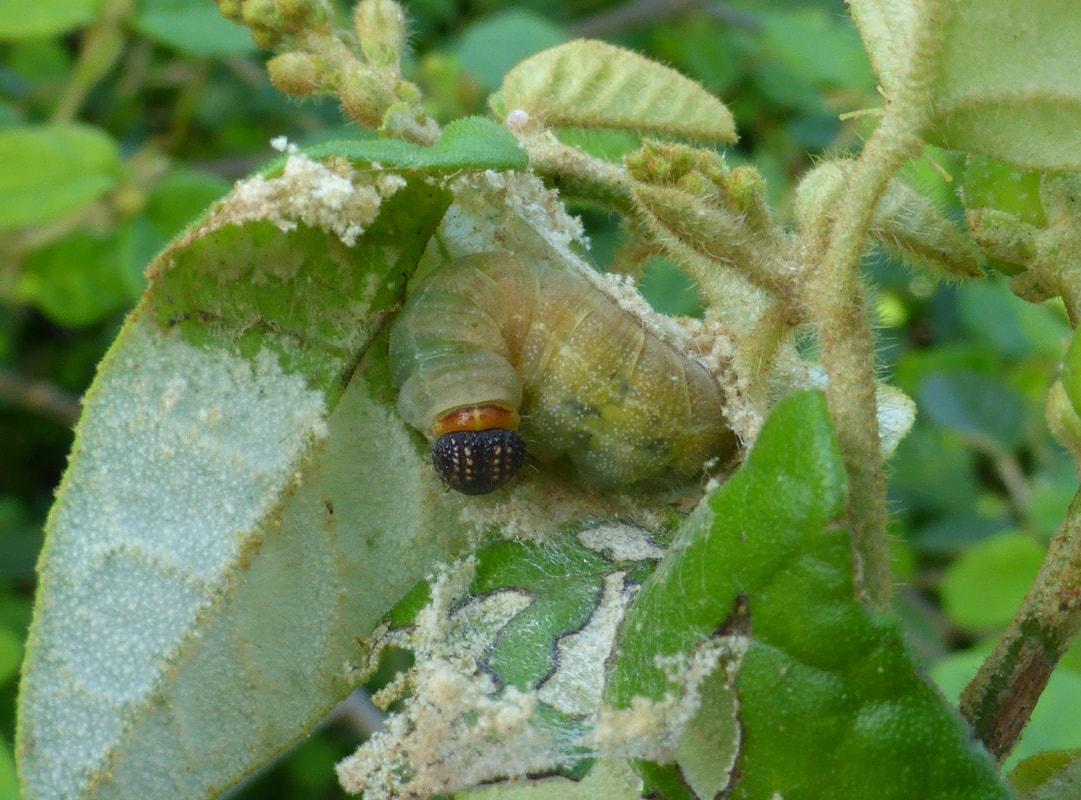 Concolorous Skipper Burca concolor larva 25 Sept 2017 Gibara © Tim Norriss
Concolorous Skipper Burca concolor larva 25 Sept 2017 Gibara © Tim Norriss |
Our taxi driver David picked us up early this morning and we then picked up our friend Douglas in Holguin before setting off to Gibara on the north coast where we were also going to meet up with Felix and Sandy. Before we got there we couldn't help stopping for fifteen minutes by a large Silk Cotton tree where there is lots of Croton origanifolius growing. This is the foodplant for Bartram's Scrub-Hairstreak Strymon acis and Cuban Leafwing Anaea cubana. Both these species occur here as well as Antillean Checkered Skipper Burnsius crisia. We were soon watching several Bartram's Scrub-Hairstreak Strymon acis nectaring on the flowers of the Croton. Wow what a beauty. Like may Hairstreaks they were very approachable and didn't move even with a camera a few inches away. They are very similar to Martial Scrub-Hairstreak Strymon martialis that we have seen before but lack the blue on the upperwings. And like them they have the adaptation of the tornus of the hindwing which splays out to show bright red spots resembling eyes with white eyebrows. This with the white-tipped tails moving like antennae must serve as an effective deterrent to predators approaching from the rear. We also found several Concolorous Skipper Burca concolor larvae in shelters made of the leaves of the Croton sewn together with silk.  Concolorous Skipper Burca concolor larva 25 Sept 2017 Gibara © Tim Norriss Concolorous Skipper Burca concolor larva 25 Sept 2017 Gibara © Tim Norriss We didn't stop long but back at the car Doug found a Limenia Scrub-Hairstreak Strymon limenia on a clump of the foodplant Malachra. We picked up Felix and Sandy in town and then took a track which leads into the hills. We stopped at a marshy area which spanned both sides of the road as there were several Reddish Egrets and Cattle Egrets along with Black-necked Stilts and a Lesser Yellowlegs. More interesting was a pair of Northern Jacana which was a new bird for me. That's what the two distant brown dots are. A Southern Dogface Zerene cesonia settled for a while on the track and we watched a Great Pondhawk Erythemis vesiculosa catch and eat a White Peacock Anartia jatrophae. We pressed on and eventually proceeded by foot up a narrow trail through the trees. Doug netted a yellow that he suspected was Confusing Yellow Pyrisitia larae and he wasn't wrong. It has rather less black on the outer margin of the forewing than Mimosa Yellow Pyrisitia nise with an uneven scalloped inner edge. Further up the hill Doug pointed out the foodplant Alvaradoa amorphoides. In the 19th century Juan Gundlach thought that the foodplant was probably Tecoma stans as he saw them flying around the flowers and interestingly we found both plants growing side by side next to the track. It was not until Harvey observed oviposition on Alvaradoa amorphoides on Andros Island in the 1980's that the real foodplant was discovered. P. larae proved to be the commonest butterfly here on the trail. The calls of Cuban Trogon, Cuban Emerald and Cuban Tody were all around. We found a nice selection of larvae and eggs and an attractive Pyralid moth Diaphantania impulsalis that we hadn't seen before. We saw a single Chestnut Leafwing Cymatogramma echemus and Doug then also found a larva. We had seen a Cuban White Ganyra menciae on the second day and here we also saw another but the weather was starting to look rather threatening with gathering black clouds and thunder overhead so we beat a hasty retreat to the car and then back into town where we had booked a casa to stay the night. A great day with good company, some nice birds and dragonflies and forty butterfly species seen if you count immature stages as well.
0 Comments
Leave a Reply. |
Welcome to our Blog
Here we will post interesting news about what we and others have seen in Cuba. Archives
July 2024
Categories |
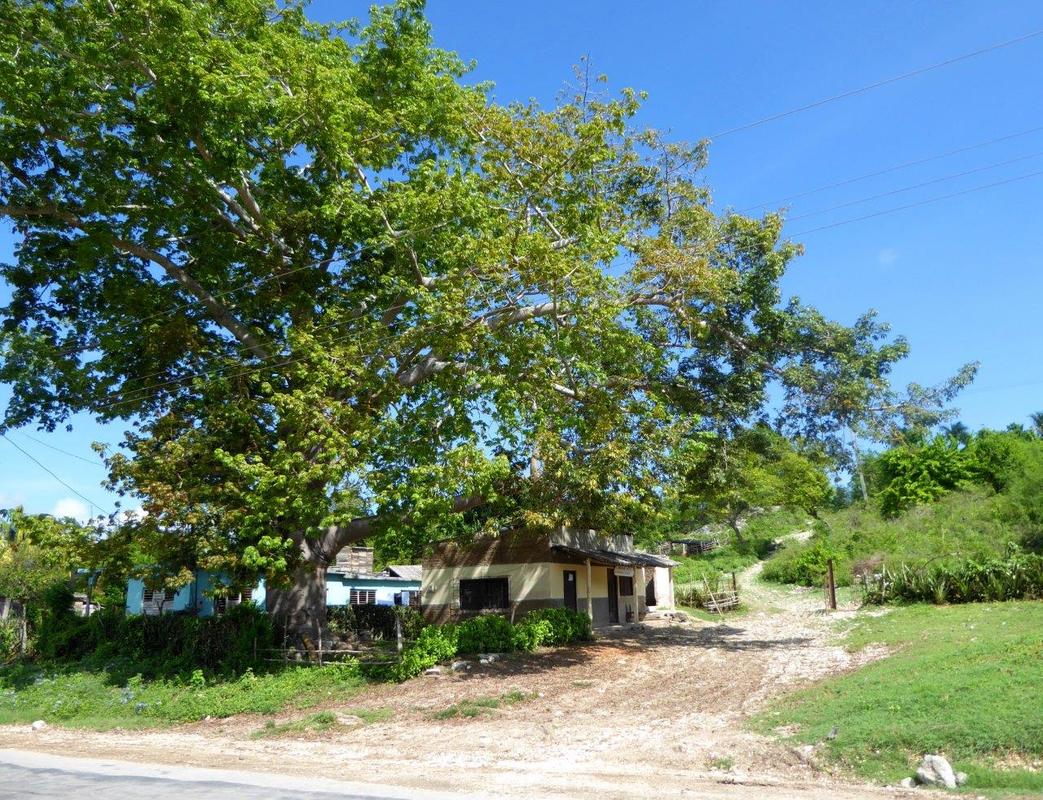
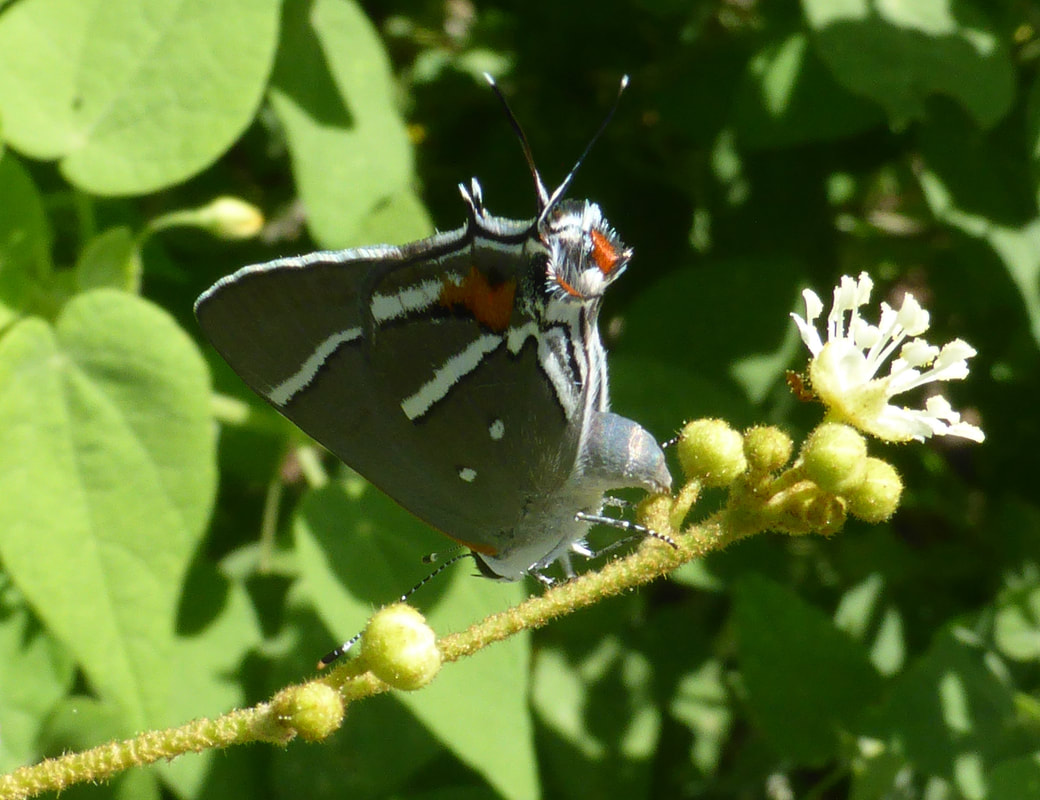
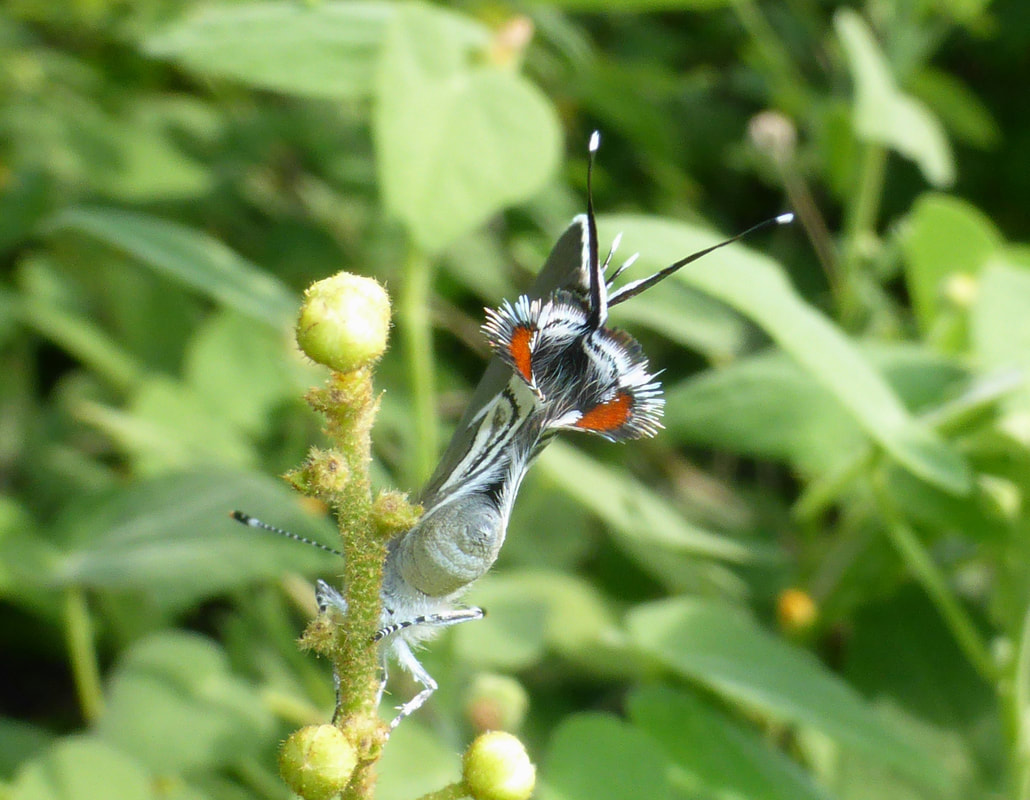
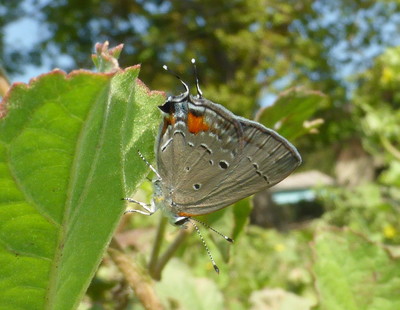
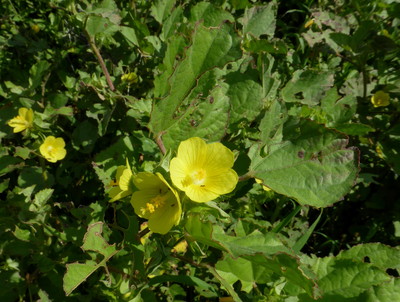
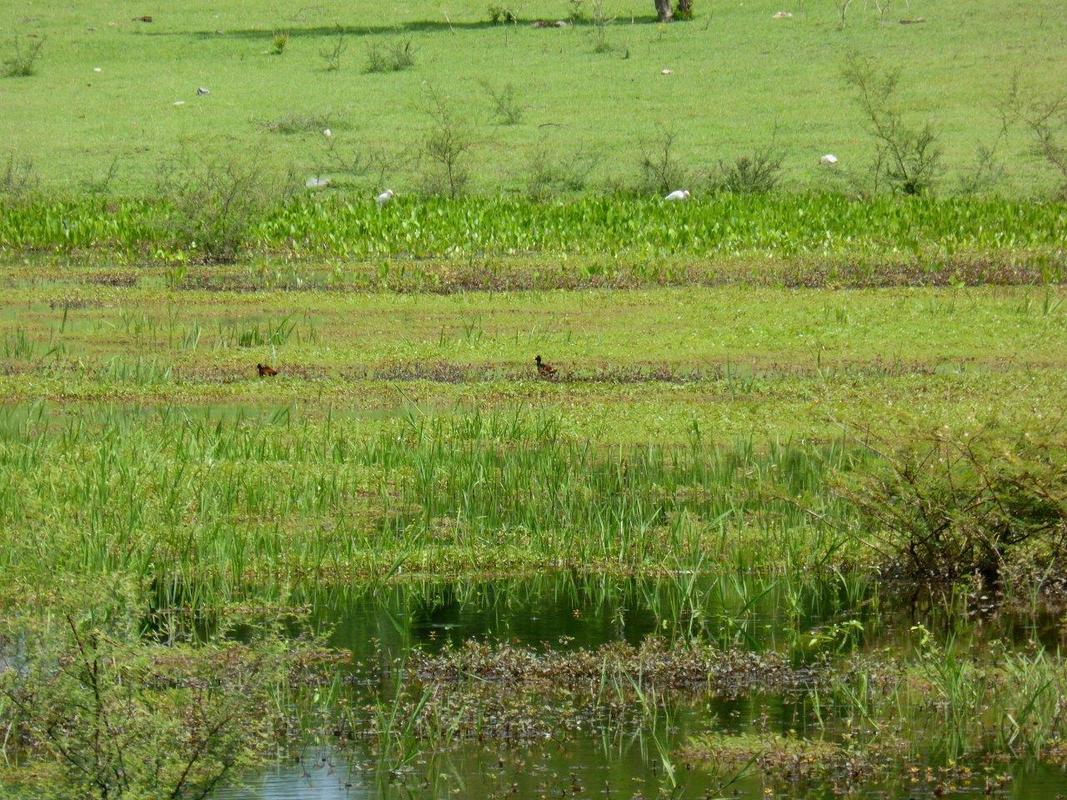
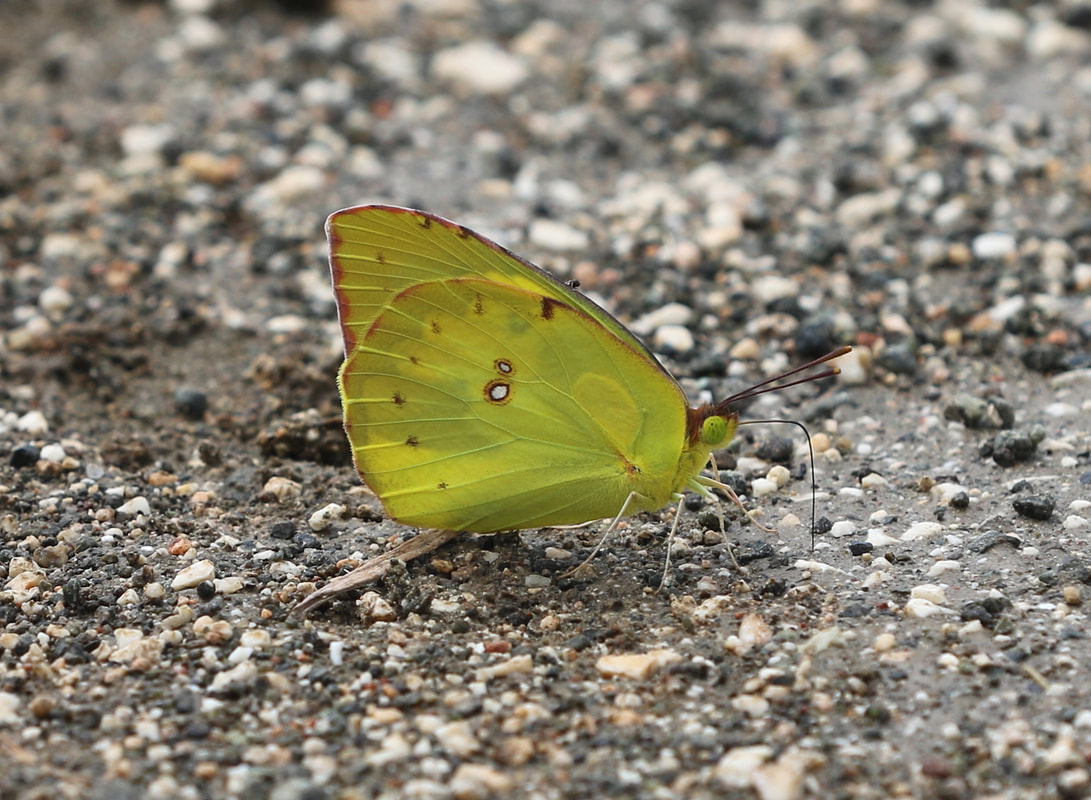
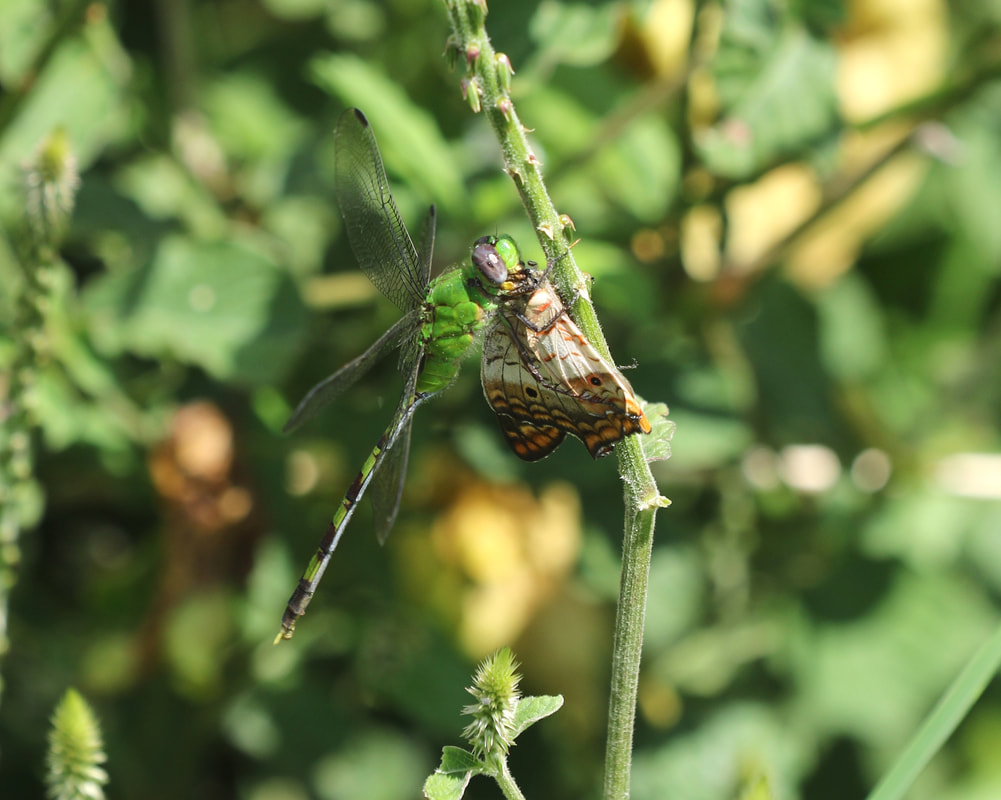
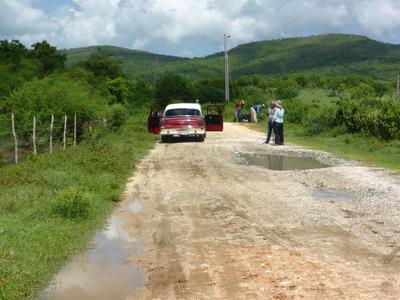
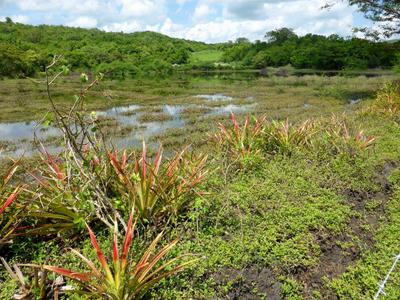
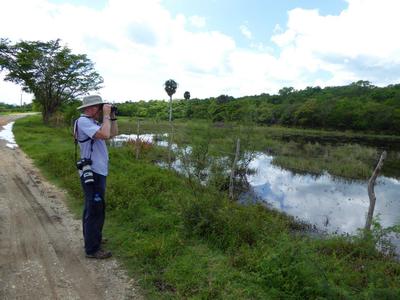
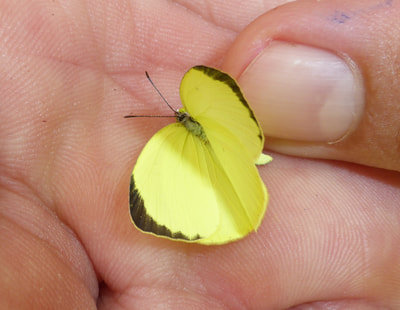
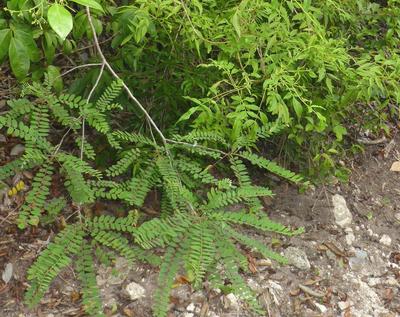
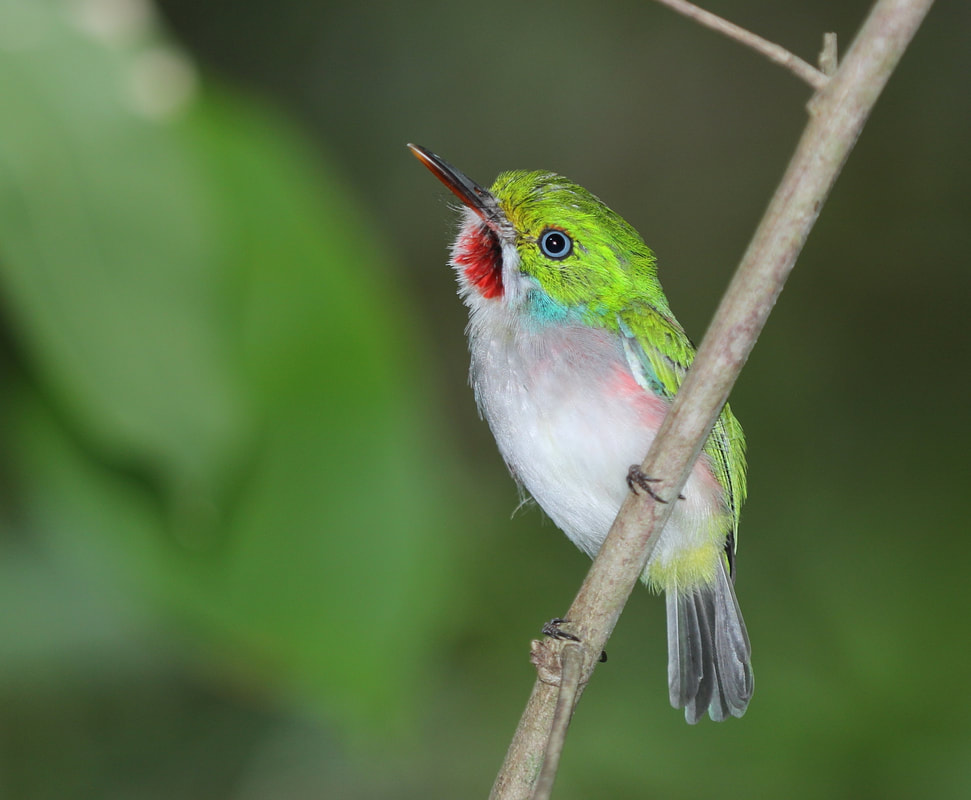
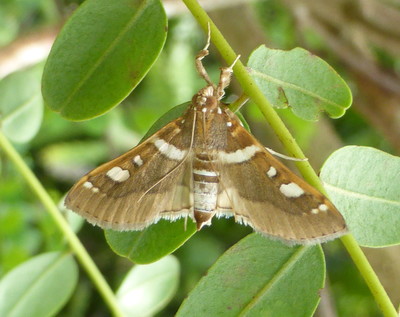
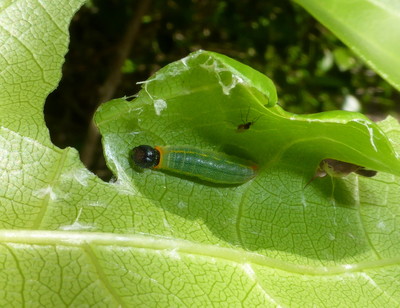
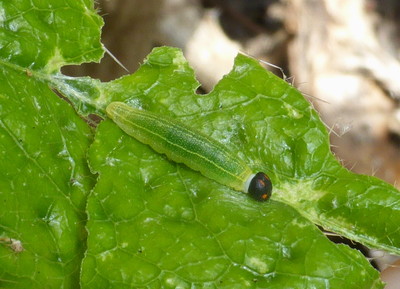
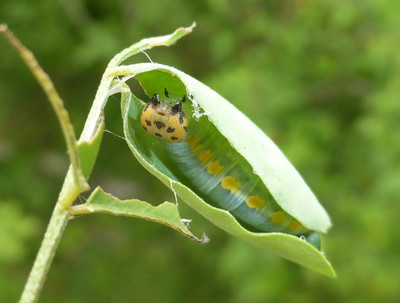
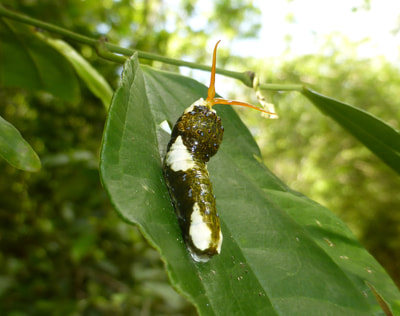
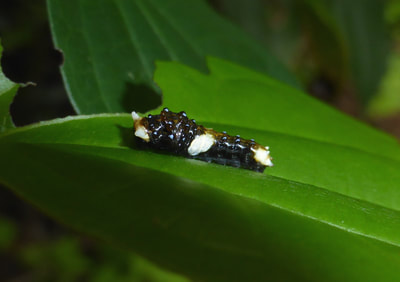
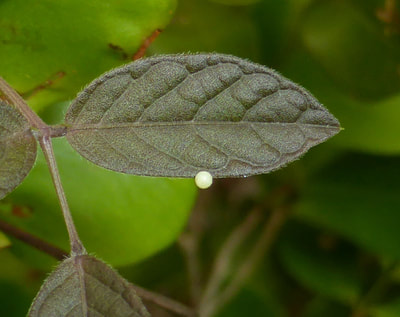
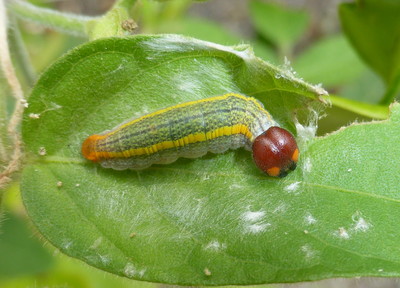
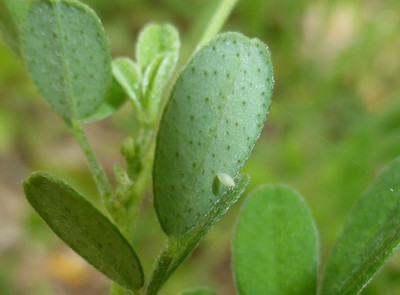
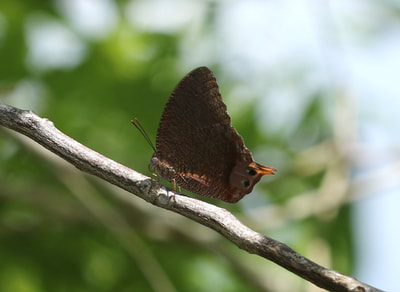
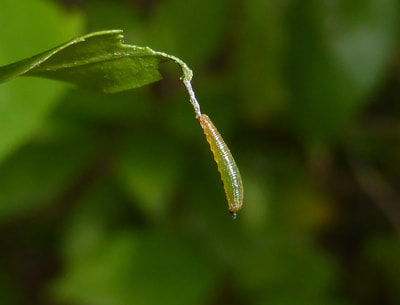
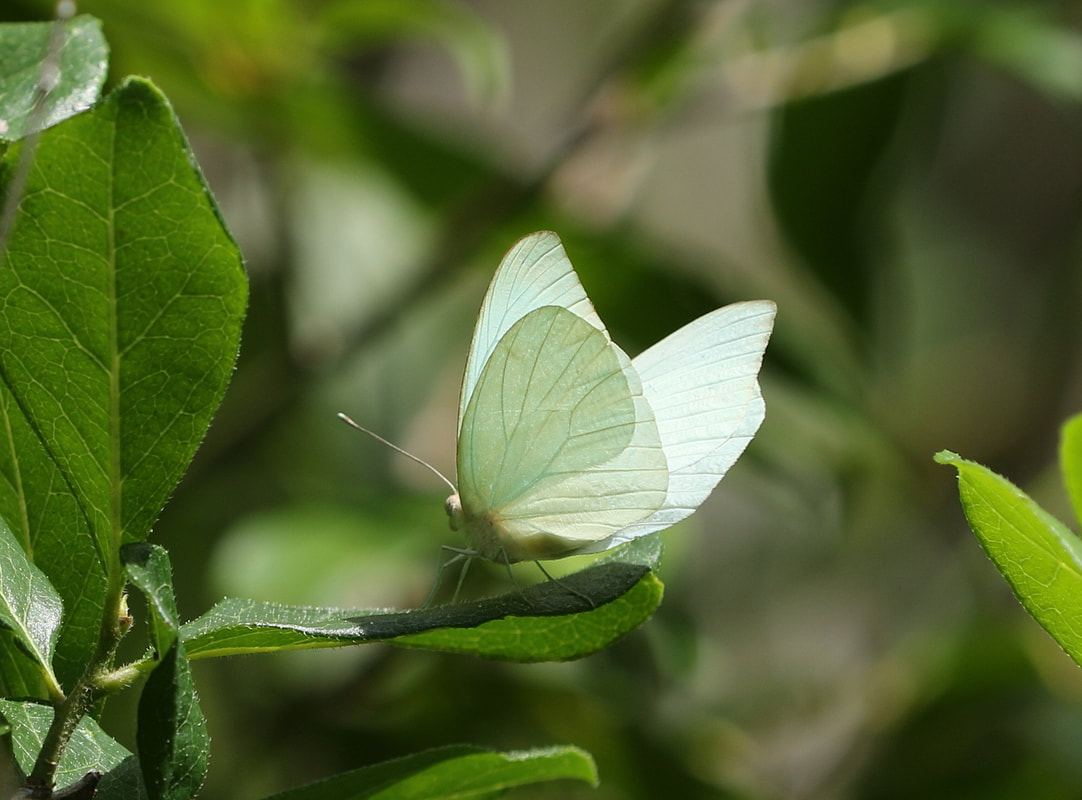
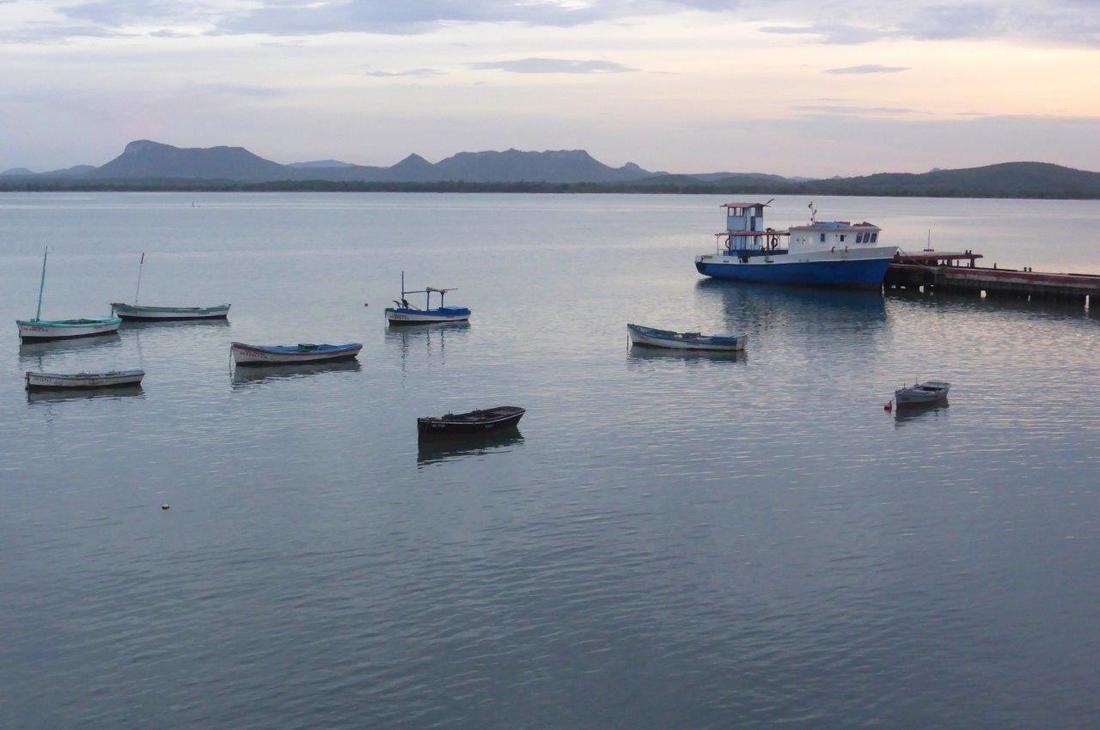
 RSS Feed
RSS Feed